Gentianales



This tree diagram shows the relationships between several groups of organisms.
The root of the current tree connects the organisms featured in this tree to their containing group and the rest of the Tree of Life. The basal branching point in the tree represents the ancestor of the other groups in the tree. This ancestor diversified over time into several descendent subgroups, which are represented as internal nodes and terminal taxa to the right.

You can click on the root to travel down the Tree of Life all the way to the root of all Life, and you can click on the names of descendent subgroups to travel up the Tree of Life all the way to individual species.
For more information on ToL tree formatting, please see Interpreting the Tree or Classification. To learn more about phylogenetic trees, please visit our Phylogenetic Biology pages.
close boxReferences
Albach, D. C., P. S. Soltis, D. E. Soltis, and R. G. Olmstead. 2001. Phylogenetic analysis of asterids based on sequences of four genes. Annals of the Missouri Botanical Garden 88:163-212.
Backlund, M., B. Oxelman, and B. Bremer. 2000. Phylogenetic relationships within the Gentianales based on ndhF and rbcL sequences, with particular reference to the Loganiaceae. American Journal of Botany 87:1029-1043.
Bremer, B. and L. Struwe. 1992. Phylogeny of the Rubiaceae and Loganiaceae: Congruence or conflict between morphological and molecular data. American Journal of Botany 79:1171-1194.
Bremer, K., A. Backlund, B. Sennblad, U. Swenson, K. Andreasen, M. Hjertson, J. Lundberg, M. Backlund, and B. Bremer. 2001. A phylogenetic analysis of 100+ genera and 50+ families of euasterids based on morphological and molecular data with notes on possible higher level morphological synapomorphies. Plant Systematics and Evolution 229:137-169.
Bremer, B., K. Bremer, N. Heidari, P. Erixon, R. G. Olmstead, A. A. Anderberg, M. Källersjö, and E. Barkhordarian. 2002. Phylogenetics of asterids based on 3 coding and 3 non-coding chloroplast DNA markers and the utility of non-coding DNA at higher taxonomic levels. Molecular Phylogenetics and Evolution 24: 274-301.
Fay, M. F., B. Bremer, G. T. Prance, M. van der Bank, D. Bridson, and M. W. Chase. 2000. Plastid rbcL sequence data show Dialypetalanthus to be a member of Rubiaceae. Kew Bulletin 55:853-864.
Olmstead, R. G., K.-J. Kim, R. K. Jansen, and S. J. Wagstaff. 2000. The phylogeny of the Asteridae sensu lato based on chloroplast ndhF gene sequences. Molecular Phylogenetics and Evolution 16:96-112.
Savolainen, V., M. F. Fay, D. C. Albach, A. Backlund, M. van der Bank, K. M. Cameron, S. A. Johnson, M. D. Lledó, J.-C. Pintaud, M. Powell, M. C. Sheahan, D. E. Soltis, P. S. Soltis, P. Weston, W. M. Whitten, K. J. Wurdack, and M. W. Chase. 2000. Phylogeny of the eudicots: a nearly complete familial analysis based on rbcl gene sequences. Kew Bulletin 55:257-309.
Sennblad, B. and B. Bremer. 1996. The familial and subfamilial relationships of Apocynaceae and Asclepiadaceae evaluated with rbcL data. Plant Systematics and Evolution 202:153-175.
Soltis, D. E., P. S. Soltis, M. W. Chase, M. E. Mort, D. C. Albach, M. Zanis, V. Savolainen, W. H. Hahn, S. B. Hoot, M. F. Fay, M. Axtell, S. M. Swensen, L. M. Prince, W. J. Kress, K. C. Nixon, and J. S. Farris. 2000. Angiosperm phylogeny inferred from 18S rDNA, rbcL, and atpB sequences. Botanical Journal of the Linnean Society 133:381-461.
Struwe L. and V. A. Albert, eds. 2002. Gentianaceae: Systematics and Natural History. Cambridge University Press, Cambridge.
Struwe, L., V. A. Albert, and B. Bremer. 1995. Cladistics and family-level classification of the Gentianales. Cladistics 10:175-206.
Title Illustrations

| Scientific Name | Piaranthus foetidus |
|---|---|
| Comments | Carrion flower (Apocynaceae). Cultivated at the Botanical Garden Basel, Switzerland. |
| Acknowledgements | courtesy Botanical Image Database |
| Copyright |
© 2001 University of Basel, Basel, Switzerland

|
| Scientific Name | Gentiana calycosa (Gentianaceae) |
|---|---|
| Location | Kidd Basin, near Kidd Creek, north of Black Mountain in the Trinity Alps (Siskiyou County, California, USA). |
| Comments | Rainier pleated gentian |
| Source Collection | CalPhotos |
| Copyright | © 1999 John Game |
| Scientific Name | Galium ambiguum |
|---|---|
| Location | Low Divide (California, USA). |
| Comments | Rubiaceae |
| Creator | Photograph by Brother Alfred Brousseau |
| Specimen Condition | Live Specimen |
| Source Collection | CalPhotos |
| Copyright |
© 1995
Saint Mary's College of California

|
About This Page
Page copyright © 2002
All Rights Reserved.
Citing this page:
Tree of Life Web Project. 2002. Gentianales. Version 01 January 2002 (temporary). http://tolweb.org/Gentianales/20724/2002.01.01 in The Tree of Life Web Project, http://tolweb.org/




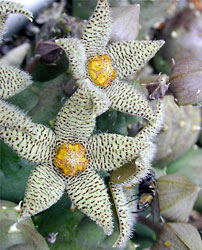
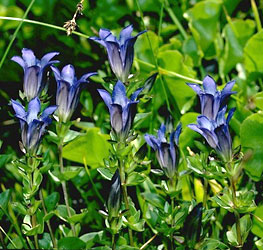
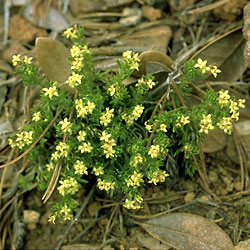

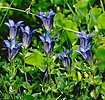
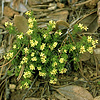

 Go to quick links
Go to quick search
Go to navigation for this section of the ToL site
Go to detailed links for the ToL site
Go to quick links
Go to quick search
Go to navigation for this section of the ToL site
Go to detailed links for the ToL site